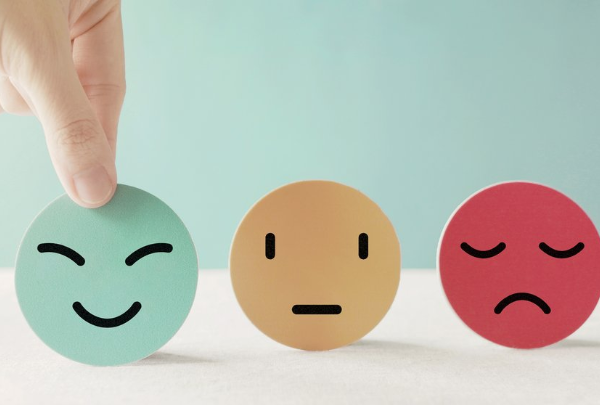 Is your to-do list too long to do? Does the mere thought of it feel overwhelming?
Is your to-do list too long to do? Does the mere thought of it feel overwhelming?
If you’re feeling burned out, you’re not alone. Burnout affects individuals in every industry. More than 75% of employees have experienced burnout in their current role, according to research from the management consultant Deloitte.
Burnout is serious but doesn’t have to be a way of life. It’s a warning sign to seek new strategies for managing work and home responsibilities.
Burnout can have permanent consequences
If you’re feeling burned out, take it seriously. Common signs of burnout include:
- Mental exhaustion
- Low motivation for everyday tasks
- Reduced productivity at work or at home
- Irritability and resentment
- Inability to concentrate
- Headaches and muscle pain
- Insomnia
- Changes in appetite
Untreated burnout increases your risk for gastrointestinal disorders and heart disease. It can also cause changes in your brain. Over time, burnout can increase the size of your amygdala, causing mood swings and emotional dysregulation. Your prefrontal cortex may get thinner, negatively impacting your memory and problem-solving skills.
Learning ways to address and manage burnout is critical. Research suggests the top mistake is attempting to push through feelings of burnout. Instead, you should step back and reevaluate.
These strategies can help you develop healthier habits as you reverse and manage the effects of burnout:
- Examine the root causes.
- Evaluate your to-do list.
- Add healthy moments to your day.
- Move forward proactively.
Examine the root causes
When you’re experiencing burnout, it can help to write down the most significant causes of stress. Contemplate both external and internal factors.
External factors might include:
- Heavy workloads at home or work
- Unclear responsibilities
- A lack of autonomy
- No personal time for recovery
- Poor social connections
Internal factors may include:
- Unrealistic expectations
- People-pleasing tendencies
- Constantly striving to prove yourself
- Prioritizing others’ needs above your own
- Not feeling a sense of purpose or reward
- Withdrawing from challenging situations
Understanding your stressors lets you pinpoint solutions. For example, issues with workload or autonomy might require a meeting with your manager to define responsibilities and flexibility. Internal factors may prompt you to explore counseling, behavioral health apps or other mental health resources.
Evaluate your to-do list
Evaluating your to-do list can help at work and at home.
Look first for items that can potentially be dropped altogether. Even if you’ve done something for a long time, it’s possible it no longer needs to be done.
Next, looking at what remains, think about what you may be able to delegate to other people. When you delegate responsibilities, be clear about what needs to get done, pertinent deadlines and follow-up requests.
Finally, look at the tasks that remain: those that must be done, and that only you can do. Rank them by priority and schedule time to finish the most important tasks first. Be on the lookout for tasks that take up too much of your time or don’t feel rewarding, which can be key sources of burnout. There may be ways to streamline or otherwise rework them.
Consider sharing your to-do list with colleagues and family members. This act demonstrates how much you’re doing and may encourage people to finish tasks themselves instead of passing them along to you.
At the end of the week, schedule a 30-minute meeting with yourself. Review your to-do list. Write down the most significant stressors for the items you accomplished and those remaining. Try to identify patterns.
Do certain people or activities consistently make your list and contribute to feelings of burnout? If so, create and maintain boundaries. It’s acceptable to decline additional responsibilities when they don’t further your career or sense of purpose. You may also need to spend less time with certain friends or colleagues, or more fully disconnect from work after hours and on weekends.
Add healthy moments to your day
Incorporating healthy habits into daily life is an essential strategy for preventing and managing burnout.
Set your intentions for a manageable mental load at the beginning of each workday. If you jump straight into a project or fret about looming deadlines, you’ll likely feel rushed all day. Instead, take two minutes to contemplate the meaning of your work. Think about the people you’re helping, including clients, colleagues and the wider community.
Take a break every 60 to 90 minutes. If possible, go outside for a walk or a conversation with colleagues. Nature, sunlight and fresh air have therapeutic effects on mental and physical health. If you stay indoors, you can reduce your stress through breathwork or slow your heart rate through full-body stretches.
Schedule 10 minutes of buffer time between meetings. Use this time to let your mind recover. Visualize clock hands slowing down. Or imagine yourself in a peaceful scene, perhaps sitting by a calm lake on a warm day.
Plan evening activities to increase your odds of leaving the office on time and disconnecting from work. Examples include cooking a leisurely dinner, spending time on a hobby, taking a class or meeting friends.
Move forward proactively
Managing burnout is an ongoing process. If you return to the same habits, you will continue to cycle in and out of burnout.
To maintain a healthier balance, create sustainable objectives. Start by setting small, achievable goals. Instead of setting a goal of clearing your entire inbox, decide you’ll spend 15 minutes responding to the most important emails. Or if you’re writing a report, break it down into goals of research, outline, main points, body, introduction and conclusion. Smaller goals help you avoid an all-or-nothing mindset that can lead to burnout.
Incorporate self-care into your day-to-day life. Self-care doesn’t always mean rest. It can also include finishing a challenging task to prove to yourself that you can do hard things. Other options for self-care include:
- Physical movement
- Mental health maintenance
- Rituals such as savoring a morning cup of coffee
- Intellectual stimulation like reading or listening to podcasts
- Social and community connections
Check in with yourself at the beginning and end of each workweek. The sooner you become aware of burnout, the earlier you can act and the easier it will be to implement healthier solutions.


